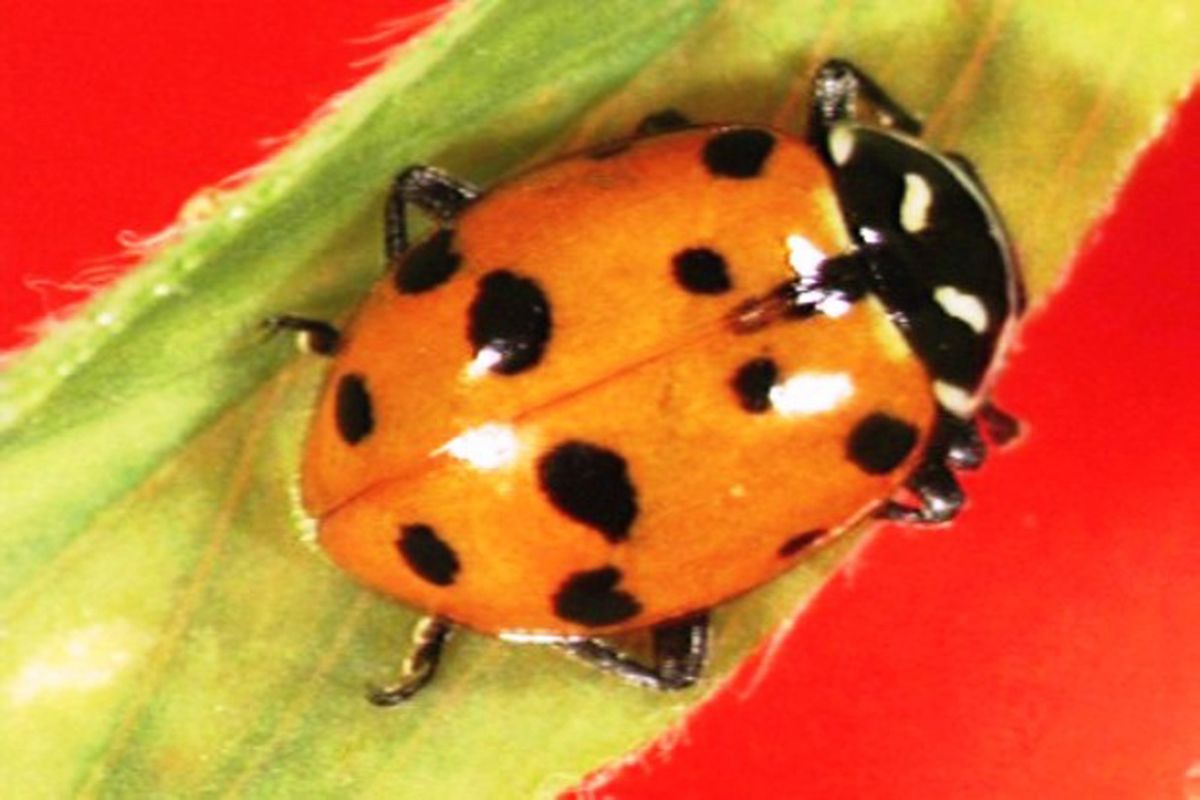Bed of bugs

At first I thought I’d disturbed a nest of red ants. Instead they were ladybird beetles – often called ladybugs – swarming on my boots.
I was sitting on a log in a small meadow for a quick break after hiking 10 miles up the North Fork of Asotin Creek. Just a few more minutes up the trail and I would have been at snowline, which was receding faster than normal in March at the end of a mild winter in the Blue Mountains.
The buff blades of matted grass at the forest edge were wiggling with life waking underneath.
Tens of thousands of little orange beetles with black polka-dot backs were being rousted from their winter hibernation by the warmth of a sunny afternoon during the last week of winter.
I tip-toed away, hiked out and sought answers.
“You found one of the very special and very important overwintering spots for one of my favorite little creatures,” said David Bragg, Washington State University dryland extension entomologist in Pomeroy.
The Nez Perce prize this grazing zone at the edge of the timber and along mountain creeks, where elk have their calves and the ladybird beetles hibernate, he said.
I had stumbled into the beetles as they were waking for a few hours to soak in the sun’s energy and drink. As the day waned, they would snuggle down in the duff and around trees for the night.
Our brief encounter was the beginning of another life lesson on the value of undisturbed wild lands.
A few weeks later, the beetles would begin flying down to a warm reception in the lowlands.
The convergent ladybird beetle, Hippodamia convergens, is a gardener’s best friend, eating perhaps its weight in aphids daily. Strict carnivores, they eat no leafy vegetation.
Farmers cheer the spring arrival of ladybirds in the low drylands and wheat fields, where they consume about 40 percent of the early-season cereal leaf beetles that can do major damage to crops.
“This is a wonderful story – a native insect is used to manage an invasive insect pest,” Bragg said.
The nursery rhyme “Lady bird, lady bird, fly away home” may have originated with a flight of these useful little buggers heading out to do good deeds, Bragg said.
The ladybird and its dragon-like larva are part of a biocontrol one-two punch that helps reduce pesticide use and boost yields.
“After the ladybirds have stopped eating them, a parasitoid wasp steps up and kills about 90 percent of the preadult cereal leaf beetles,” Bragg said.
Of course, the ladybirds aren’t restricted to the Blue Mountains. Snowshoers who hike to the top of Mount Spokane in May have reported ladybird beetles emerging from the grasses and swarming on the stone Vista House to soak up energy before they descend to the lowlands.
Birds and other predators would have a feast on them at this stage, except they have a good defense.
“Like most red-to-orange and black bugs, they’re apparently toxic or have a very foul taste,” Bragg said. “Most creatures won’t eat them, except for bears, which eat pretty much anything they want.”
Indeed, after the ladybirds have done their summer work of propagating and controlling pests in the lowlands, their new generations congregate in the mountains in fall.
In some areas, such as Glacier National Park and the Mission Mountains of western Montana, these aggregations are a dinner bell to grizzlies.
“Actually, it’s not just the ladybird beetles, but also the army cutworm moths that congregate in the same areas (in the rocks above timberline),” said Stacy Courville, wildlife biologist for the Confederated Salish Kootenai Tribes.
Both insects are attracted to the warmth of the rocks where bears can lap them up in swarms as though they were grain in a trough.
“I don’t think the ladybirds are all that good to eat, but bears will do it, well, because they can, and because they want to get to the moths, which are pretty much solid fat.”
The tribe closes the McDonald Peak area of the Missions July 15-Oct. 15 to keep people from this buggy bear attraction.
This year’s early receding snow was probably a good sign for wheat farmers, Bragg said.
“If the ladybird beetles are late arriving in the drylands, the cereal leaf beetles get established and the damage is done,” he said.
They’ll be busy little buggers this spring and summer.
Three or four generations of ladybird beetles will be produced this season in the lowlands.
But the progeny of the beetle aggregation I discovered in March will somehow find their way back this fall to the same meadow in which their ancestors have hibernated year after year.
“That’s why they’re such special places,” Bragg said.